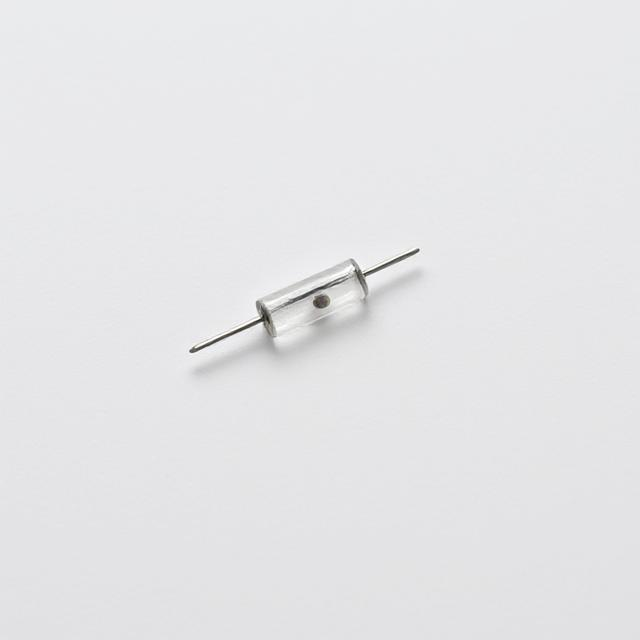Introduction to Tunnel Diodes
A tunnel  is a type of diode with an extremely high doping concentration of impurities, which leads to a very thin depletion region. This unique structure allows the diode to exhibit a phenomenon called quantum tunneling, which results in negative resistance in certain regions of its operating characteristics. Tunnel diodes are a fascinating example of quantum mechanics in action and have applications in specialized fields that require ultra-fast switching and low voltage operation.
is a type of diode with an extremely high doping concentration of impurities, which leads to a very thin depletion region. This unique structure allows the diode to exhibit a phenomenon called quantum tunneling, which results in negative resistance in certain regions of its operating characteristics. Tunnel diodes are a fascinating example of quantum mechanics in action and have applications in specialized fields that require ultra-fast switching and low voltage operation.
The tunnel diode was invented by Leo Esaki in 1957, for which he later received the Nobel Prize in Physics. It became one of the first devices to demonstrate the principles of quantum tunneling in semiconductors.
How Tunnel Diodes Work
The key to understanding how tunnel diodes operate lies in quantum tunneling. In a typical diode, the current only flows when the forward voltage is high enough to overcome the barrier created by the depletion region. However, in a tunnel diode, the depletion region is so thin that electrons can “tunnel” through the barrier even at very small voltages.
In the tunnel diode:
-
At very low voltages, electrons can pass through the small potential barrier due to quantum tunneling, leading to current flow.
-
At higher voltages, the current increases up to a certain point.
-
At even higher voltages, the current starts to decrease (negative resistance), which is a unique property of tunnel diodes.
The negative resistance effect occurs because, at higher voltages, the energy levels of the electrons in the valence band and conduction band align in such a way that the probability of tunneling decreases, thus reducing the current.
Characteristics of Tunnel Diodes
-
Negative Resistance: Tunnel diodes exhibit a region where an increase in voltage leads to a decrease in current, which is known as negative resistance. This is due to quantum tunneling, and it makes tunnel diodes useful for high-speed switching and oscillation applications.
-
Very Fast Response: Tunnel diodes have extremely fast switching times, typically on the order of picoseconds (1 trillionth of a second), because of their small size and the quantum tunneling phenomenon.
-
Low Forward Voltage: Tunnel diodes have a very low threshold voltage (typically around 0.1V or less) compared to regular diodes, which allows them to conduct at lower voltages.
-
High Doping Concentration: The semiconductor material in tunnel diodes is highly doped, creating a very thin depletion region. This contributes to the tunnel diode’s ability to operate at low voltages and exhibit negative resistance.
Applications of Tunnel Diodes
Tunnel diodes have several specialized applications due to their unique properties, especially in high-speed and microwave circuits. Some common uses include:
1. High-Speed Oscillators
Due to their negative resistance and fast switching capabilities, tunnel diodes are ideal for use in oscillators, particularly at microwave frequencies. These oscillators can generate high-frequency signals that are used in radar systems, communication systems, and test equipment.
2. Microwave Amplifiers
Tunnel diodes are used in microwave amplifiers to boost the strength of microwave signals. Their ability to work at high frequencies and their low power consumption make them well-suited for applications in communication systems, including satellite and cellular communications.
3. Pulse Circuits
Tunnel diodes are often used in pulse circuits where rapid changes in voltage are needed. Their fast switching ability makes them useful for generating narrow, high-speed pulses in digital systems, communication equipment, and testing environments.
4. Fast Switching Devices
Tunnel diodes are also used in high-speed switching applications, such as in digital logic circuits, where their quick response times (on the order of picoseconds) are crucial for fast data processing. They are especially valuable in circuits where fast turn-on and turn-off times are necessary.
5. Low-Noise Amplifiers
In some applications, tunnel diodes are used as low-noise amplifiers, especially in sensitive detection equipment like radio receivers and scientific instruments. The ability of tunnel diodes to operate with minimal noise is beneficial for applications that require high precision.
6. Voltage-Controlled Oscillators (VCOs)
Tunnel diodes are often used in voltage-controlled oscillators (VCOs) where a change in the input voltage can directly control the frequency of oscillation. These VCOs are used in various communication devices, such as frequency synthesizers and signal generators.
Advantages of Tunnel Diodes
-
Ultra-Fast Switching: Tunnel diodes can switch on and off in a fraction of a nanosecond, making them extremely useful for high-speed applications.
-
Negative Resistance: This property makes them valuable in oscillators and amplifiers, providing a stable source of signal generation at high frequencies.
-
Low Power Consumption: Tunnel diodes operate at low voltage and current levels, making them energy-efficient compared to some other high-speed devices.
-
Compact Design: The small size and fast response time of tunnel diodes allow for compact circuit designs that are especially useful in space-constrained applications like microelectronics and communications devices.
Limitations of Tunnel Diodes
-
Limited Power Handling: Tunnel diodes are typically low-power devices. Their performance degrades when used in high-power applications.
-
Fabrication Complexity: Tunnel diodes require a high level of doping in the semiconductor material, which can be challenging and expensive to produce.
-
Temperature Sensitivity: Tunnel diodes are sensitive to temperature variations. As temperature increases, their behavior can change, affecting the performance of the circuits they are used in.
-
Low Reverse Breakdown Voltage: Tunnel diodes typically have a low reverse breakdown voltage, meaning they cannot handle high reverse voltages without being damaged.
Conclusion
Tunnel diodes are a fascinating and important component in the world of high-speed electronics. Their ability to demonstrate quantum tunneling and their unique negative resistance characteristic makes them invaluable in applications that require fast switching, high-frequency oscillation, and low power consumption.











